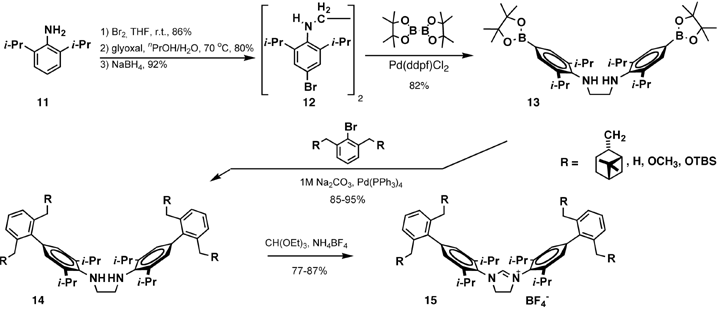|
|

|
Drug production is made less expensive and more efficient by catalysts. The rhodium (Rh) center is a catalyst. The special nature of our ligand is to wrap around the metal and create a right or left handed environment that closely surrounds the metal catalyst.
|
|
|
Objective: |
asdfad asdffdsffsda |
||
| Scheme 1. Synthetic method developed by Xiaohong Pan, third year graduate student. The route is convergent and will allow small ‘libraries’ of chiral caducean ligands to be efficiently prepared. |
|
Progress: |
[ Home | Related Sites | Members | Contact Us ]